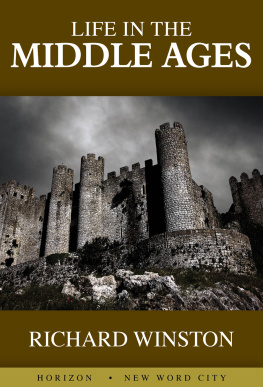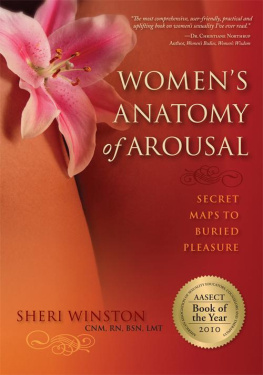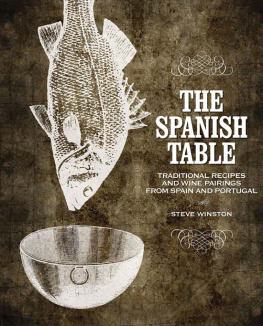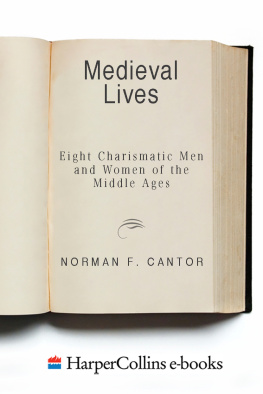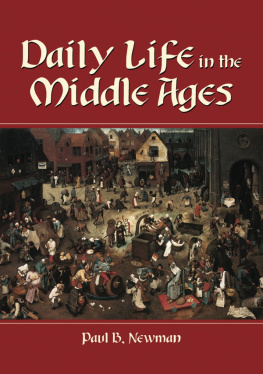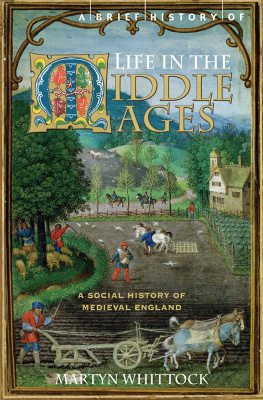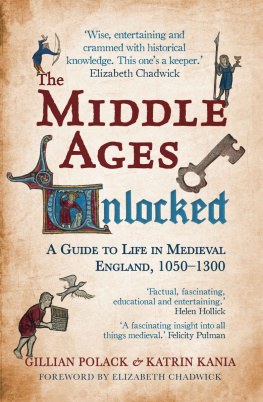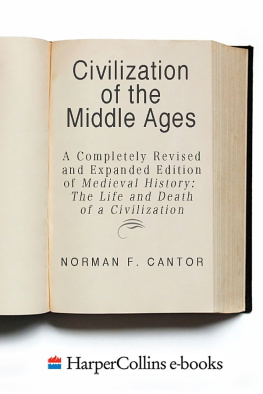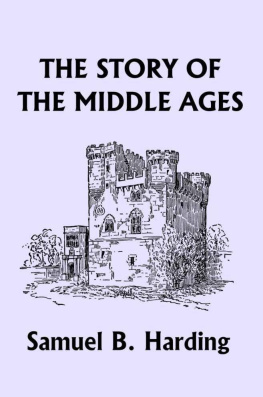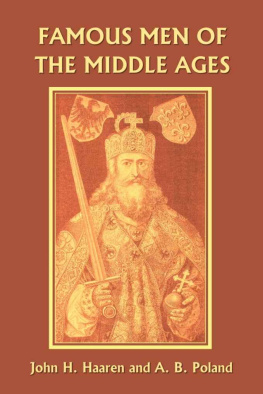Winston - Life in the Middle Ages
Here you can read online Winston - Life in the Middle Ages full text of the book (entire story) in english for free. Download pdf and epub, get meaning, cover and reviews about this ebook. year: 2016, publisher: New Word City, genre: Non-fiction. Description of the work, (preface) as well as reviews are available. Best literature library LitArk.com created for fans of good reading and offers a wide selection of genres:
Romance novel
Science fiction
Adventure
Detective
Science
History
Home and family
Prose
Art
Politics
Computer
Non-fiction
Religion
Business
Children
Humor
Choose a favorite category and find really read worthwhile books. Enjoy immersion in the world of imagination, feel the emotions of the characters or learn something new for yourself, make an fascinating discovery.
- Book:Life in the Middle Ages
- Author:
- Publisher:New Word City
- Genre:
- Year:2016
- Rating:5 / 5
- Favourites:Add to favourites
- Your mark:
- 100
- 1
- 2
- 3
- 4
- 5
Life in the Middle Ages: summary, description and annotation
We offer to read an annotation, description, summary or preface (depends on what the author of the book "Life in the Middle Ages" wrote himself). If you haven't found the necessary information about the book — write in the comments, we will try to find it.
Life in the Middle Ages — read online for free the complete book (whole text) full work
Below is the text of the book, divided by pages. System saving the place of the last page read, allows you to conveniently read the book "Life in the Middle Ages" online for free, without having to search again every time where you left off. Put a bookmark, and you can go to the page where you finished reading at any time.
Font size:
Interval:
Bookmark:
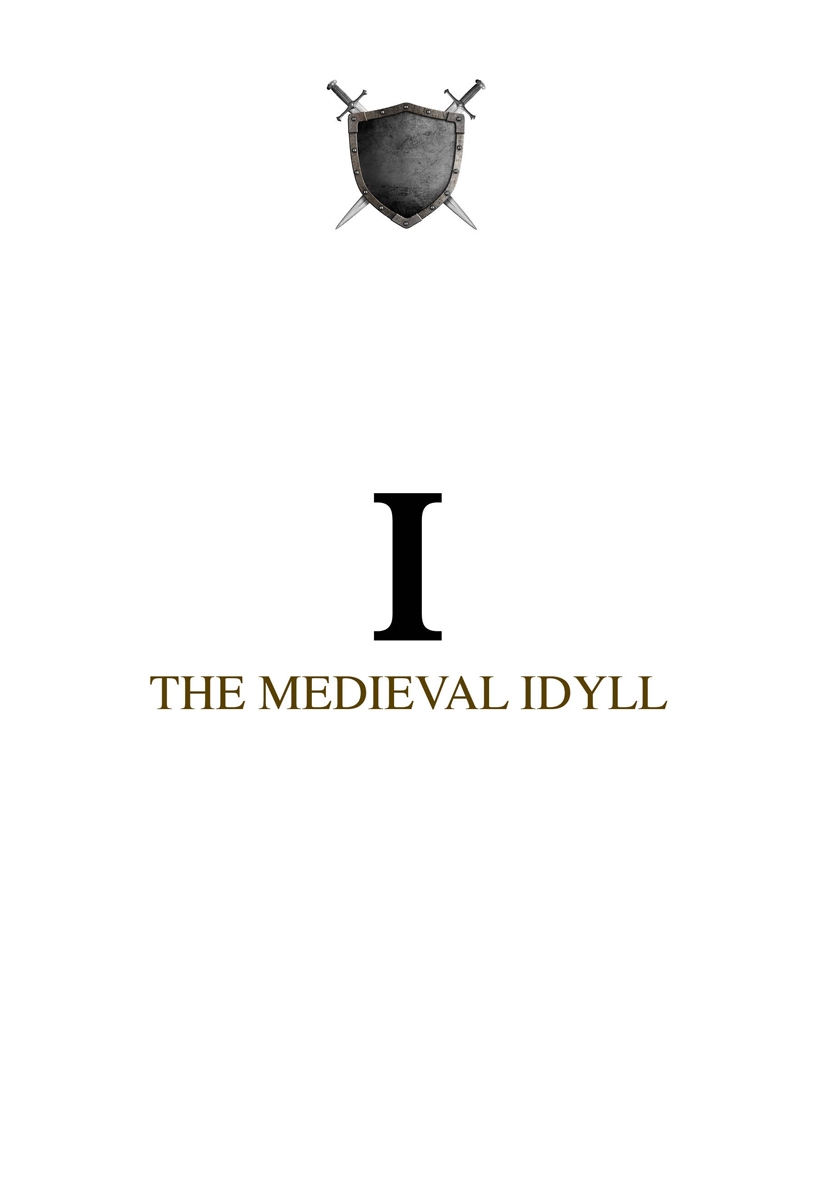
It is September. The grapes are ripe. A group of peasants stoop among the vines. An ox cart stands by, holding two tubs brimming with purple fruit. A short walk away, over a little drawbridge, is a castle: a cluster of white walls, crocketed eaves, conical roofs, tall chimneys, and gilded weather vanes. A tiny woman dressed in scarlet is on her way toward it. She carries a grape-filled basket on her head, steadying it with one arm. The fields are vibrantly green, and the sky ravishingly blue.
We take our bearings at once. We are in the heart of the French High Middle Ages.
This is the first of the calendar pictures from a Book of Hours, a book of prayers for private devotion, commissioned by Jean, Duke of Berry, of the House of Valois, in the year 1412. In the catalog of the dukes possessions drawn up after his death, the still-unbound sheets were described as a Trs Riches Heures (Most Rich Hours) by the artists, the brothers Limbourg, and the description has become the books title since then. January is for lavish entertaining. Gold and silver utensils glitter on a white-clothed table. The room is crowded with fantastically dressed courtiers. The host himself, enveloped in a robe of blue brocade, sits on a dais close to the fireplace. There is rush matting on the floor, and the wall is hung with a tapestry showing an incident in the Trojan War.
The heavyset man in blue brocade is the Duke of Berry, and the picture celebrates his scale of life and breadth of culture. The next illustration is in total contrast. February shows the wintry yard of a peasant homestead. Sheep huddle in their shed, beehives are capped with snow, and a small flock of magpies peck seed from a fallen wisp of hay. Inside the house, conveniently cross-sectioned, the peasant family hugs the fire. In the far distance, also buried in the snow, is a village, a snow-covered church spire pointing into the cold sky. The scene is overwhelmingly white and speaks of the austerity of winter, the precariousness of humble shelter, the narrow margin by which men and women and animals survive.
By March, the snow is gone. The illustration shows a medieval estate with its many subdivided fields. Again, there is a castle in the distance. The sky has a lowering look; the earth is still dark and sullen. But lambs have been born in the upland pasture, and it is not too early to be pruning fruit trees. In the foreground, a peasant is guiding his plow through the field. The oxen strain, muscles rippling under their hides. The peasant, an old man in torn clothing, also shows arthritic stiffness in his posture.
April is for betrothals. Again, we are in the company of nobles, privileged young people in fine clothing and plumed hats. A ring is being offered. The picture may record the engagement of Charles dOrlans to Bonne dArmagnac, an event that would have been very much in the Duke of Berrys sphere of interest, for he was Bonnes grandfather and Charless granduncle. The match brought together two of the most highborn and exemplary young people in France besides having enormous political implications. Charles was fifteen and Bonne was eleven, but that was not so uncommonly young, and the principals conducted themselves like grownups.
The marriage was a happy one, but it was to be pitifully curtailed. Charles was twenty-one when he was taken prisoner by the English at the Battle of Agincourt. He was to turn his young mans energies entirely to poetry in the years to come, for he remained twenty-five years in the hands of his English captors. He chafed at his helplessness, grieved at the news from France. Often his thoughts turned to his young wife: When I must lie in bed at night, thought and desire overcome me, and many times I think I hold you in my arms, dearest mine, and I clasp my pillow and cry.
Midway in that long stretch of years, news came to him that Bonne had died. No cause of death was given, and none was asked for. Inexplicable deaths were part of the natural order of things. Less natural was the political turbulence over the years in which so many of Charless friends and partisans were killed. His country was wracked by war and anarchy, its sound peasantry ruined and brutalized. But when this little April scene was painted, none of this could have been foreseen. No shadows darken the glade where the engagement party is held.
May is also a noble scene lords and ladies go out riding. The green mantles of the ladies symbolize joy, and most of the riders have decked themselves with wreaths of small spring leaves. The party will reappear once again in August and again on horseback, the ladies in summer dress and with their hair confined by filmy wimples. In the August picture, peasants share the scene; some are cutting ripened wheat, others swim in the river. The landscape shimmers palely in the summer heat.
On the whole, though, the calendar pictures of peasant labor outnumber those of noble pastime. Peasants had figured often enough in medieval iconography, but always in a subsidiary capacity. This is the first instance of their being shown as the chief characters in the scene, and in a purely secular context. This new position of the peasant reflected an intellectual and religious current of the time, a sort of mystical interest in the common person. The Limbourg brothers infused the subject with personal feeling. They came from the Lowlands, where already there was a strong tradition of artisan protest against social inequity. Moreover, enlumineurs were artisans themselves.
The pictures have a magic quality. Excluding the astrological chart crowning them, each is barely six inches by five inches, little larger than a picture postcard. But they draw one into a full-sized world. Here on the inside, everything is startlingly realistic. These pictures were surely painted with the aid of a jewelers loupe and are best studied through a magnifying glass. Through the lens they reveal a further range of differentiation and private allusion. The same pet dogs recur, toy terriers allowed to jump on the ducal table in January, and later, grown perceptibly bigger, to tag along with the Maying party. The faces of the nobles and ladies are portraits. The brocaded garment, furred hat, and gold collar of the January picture are actual items from the ducal wardrobe, and the tapestry is a prized one from the dukes collection. The young men whose gray-blue stocking caps set them apart from the fine-bonneted nobles at the feast are believed to be Paul and Jean Limbourg themselves. As for the castles in the background of each picture, they are real buildings, accurately represented down to the smallest detail; and each, if not the property of the duke, was intimately connected with his life.
But not only the aristocratic details have been treated with this kind of respect. As lovingly recorded are the bungholes of barrels, stones in plowland, reeds rimming a stream, implements in the hands of peasants. We see in the very ropes that manipulate a drawbridge, minute figures of women kneeling on the river bank to do washing and scraps of cloth strung out over a newly planted field to keep the birds away. It is the holiness of the everyday that the calendar pictures celebrate the cycle of nature, the round of simple essential activities performed by peasants and domestic animals. It is peace and normality.
A beautiful world we are painfully conscious of our distance from it and of the hopelessness of wishing it back. Nor are we so sure we would like those preindustrial patterns. We would hardly want to be plunged into the insecurities of medieval life. In a scarcity economy, famine was inescapable. In the absence of scientific knowledge, there was no defense against disease. Although medieval wars were minor operations by our standards the armies small, the weapons simple the battlegrounds were entire countries and the devastation was cruel enough, in terms of human suffering. We cannot help shuddering at the harshness of the legal system. We shudder also at the guilt and terror instilled in the medieval psyche in the name of religion. No, we cannot fall into the illusions of the nineteenth-century romantics who thought they could take the good of an agrarian world and leave out the bad. We have some idea of how all these things hang together.
Font size:
Interval:
Bookmark:
Similar books «Life in the Middle Ages»
Look at similar books to Life in the Middle Ages. We have selected literature similar in name and meaning in the hope of providing readers with more options to find new, interesting, not yet read works.
Discussion, reviews of the book Life in the Middle Ages and just readers' own opinions. Leave your comments, write what you think about the work, its meaning or the main characters. Specify what exactly you liked and what you didn't like, and why you think so.

